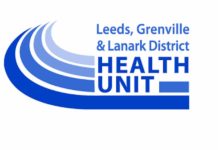Each year, the Leeds, Grenville & Lanark District Health Unit conducts Nutritious Food Basket costing. The results show that individuals and households living with a low income struggle to buy enough nutritious food after paying rent, bills, and other living expenses.
From the 2017 Canadian Community Health Survey, 9.4%, or 6,449 households in Leeds, Grenville and Lanark reported some level of food insecurity. “Food insecurity is not having enough income to buy healthy food. When money is tight there is less money for food. This leads to skipped meals, poor mental, physical and oral health and a greater risk of chronic disease”, says Registered Dietitian and Public Health Nutritionist, Marie Traynor.
Evidence shows a nutritious food intake plays a positive role for healthy pregnancies and birth outcomes, healthy growth and development and a risk reduction for chronic diseases later in life. Addressing food insecurity will likely also decrease use of the health care system.
Not being able to afford nutritious food can affect health. Energy, vitamins and minerals from healthy food are vital for healthy pregnancies and babies born with a healthy weight. Low birth weight babies are at a higher risk of developing health problems and disabilities than babies born with a healthy weight. Low intakes of folic acid (or folate) prior to and during pregnancy can increase the chance of having a baby with a neural tube defect (NTD) such as spina bifida. Children who experience hunger have a greater risks of depression and thoughts of suicide in adolescence and early adulthood.
Lack of healthy food over time contributes to chronic conditions such as diabetes, high blood pressure, and, mood and anxiety disorders. In 2015, the Canadian Medical Association Journal published this data linking insecurity of food and health costs:
“After adjusting for other well-established social determinants of health, such as education and income levels, total annual health care costs in Ontario were:
- 23% higher for adults living in marginally food insecure households than in food secure households.
- 49% higher for adults living in moderately food insecure households than in food secure households.
- 121% higher for adults living in severely food insecure households than in food secure households.”
While food banks play an important role in reducing food insecurity, they are not a permanent solution to this problem. Food bank operators work hard to increase food access facing several challenges in the process. Individuals and families may find it difficult or embarrassing to have to go to a food bank. Some food banks may have a limited selection of food since they rely on donations and drives. Food banks do not always have the facilities to store fresh food such as vegetables, fruit, dairy products, eggs, fish and meat. Food banks may restrict the number of times recipients use their services, because their supply is limited.
For more information, visit: https://healthunit.org/health-information/healthy-eating/ or call 1-800-660-5853. You can connect with LGLHealthunit of Facebook and Twitter for important public health updates.






